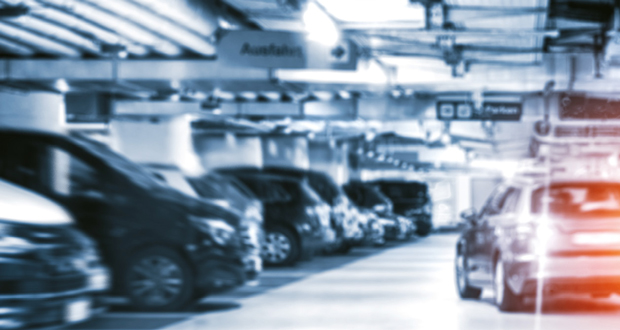In our focus on parking, three experts offer advice on providing high-quality parking solutions, the opportunities for FMs in reimagining office parking and how organisations can support the electric vehicle transition
The parking landscape has battled through tumultuous times over the past five years. The pandemic has resulted in more companies adopting flexible hybrid working options; government vehicle targets mean we now have more electric vehicles (EVs) on our roads, which will only increase as we approach the 2030 ban on sales of conventional petrol and diesel-powered cars; and technological advancements mean traditional methods of managing traffic flow in car parks are becoming increasingly outdated.
This has caused a dramatic shift in how car parks are managed and what top-rated provision now looks like. Facility managers can rise to these challenges by being proactive and understanding how carefully considered parking provision can not only improve their reputation but increase their revenue as well. In 2022, we saw gross revenue figures for commercial bookings increase to over £45 million. One leading supermarket chain we work with saw its parking gross revenue hit over £3 million, reinforcing the importance of managing a car park effectively and the direct impact it can have on increasing revenue.
SAFETY FIRST
One of the first things an FM should consider is how safe their parking is, from both a customer and revenue standpoint. The traditional barrier has an increased probability of malfunctioning, which can result in having to decide whether to manually manage traffic flow by increasing authorised persons at the barrier, or leave the barriers up, which reduces the ability to know who is coming in and out of the car park.
Many people are now moving away from barrier-controlled traffic solutions and opting for advanced Automatic Number Plate Recognition (ANPR) technology.
The switch to ANPR at entrance and exit provides a frictionless alternative to barrier downtime and creates an automated way to control car park occupancy whilst also providing 24/7 surveillance. The use of ANPR increases customer payments through fair and ethical management processes as it captures those who are entering without a paid parking session, deterring them from future car park misuse.
What’s more, the data collected from the cameras can allow parking managers to create detailed driver profiling which can play a significant part in influencing future decisions for the running of the car park, such as additional autopay services for people who work in the building.
CHANGING WORKER ATTITUDES
There has been a mental shift with an increasing number of employees placing sustainability at the top of their priorities when deciding where to work. Installing electric charging points at a workplace is an obvious incentive which encourages those with an electric car to use available bays. Many FMs are looking to future proof facilities by increasing the amount of charging points above the current levels of demand with the knowledge that the number of EVs on the road is only going to increase.
Further incentives like considering emission-based tariffs for private and business drivers allow FMs to promote and encourage customers to make greener choices. And providing pricing schemes and ancillary services that encourage short-term rental car clubs to use the venue can turn the dial for drivers seeking pragmatic mobility solutions. Either way, these can all be monitored through digital systems working alongside ANPR.
Although these solutions may incur up-front costs during an initial installation phase, by diversifying provisions, managers will increase the longevity of their car parks and, more importantly, their appeal.
PARKING SOLUTIONS FOR ALL
While regular office workers may be familiar with the site, visitors won’t. Therefore, it is important to implement a clear visitor journey through appropriate signage and lighting in the car park. Highlighting vacant or appropriate bays with lighting systems are a start.
Following this, there are now a host of ways to pay for parking such as Express Payments (QR codes), Digital Kiosks, Pay by Mobile (App), IVR phone numbers, and Autopay, with each one enhancing customer experiences, as well as streamlining the payment process. Whichever system you choose, the ability to offer variable tariffs and simple validation methods is key.
Data-led systems are able to monitor traffic patterns to ensure that appropriate parking is provided for the workplace occupants, while encouraging others to also use the unoccupied spaces. By putting more thought and consideration into car park provisions, the changing landscape doesn’t need to be daunting, in fact, it can be quite an exciting prospect to embrace.






